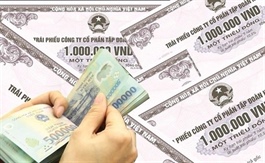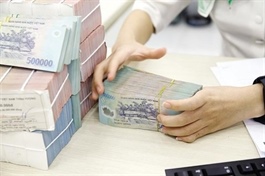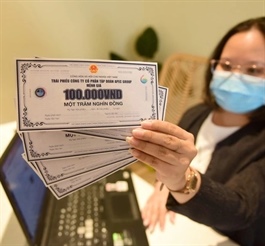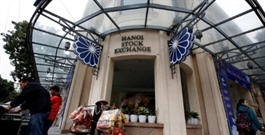Việt Nam’s local currency bond market contracts 0.4%
Việt Nam’s local currency bond market contracts 0.4%
Việt Nam’s local currency bond market contracted 0.4 per cent from the previous quarter due to a large volume of maturities of central bank securities, according to a new report by the Asian Development Bank (ADB).
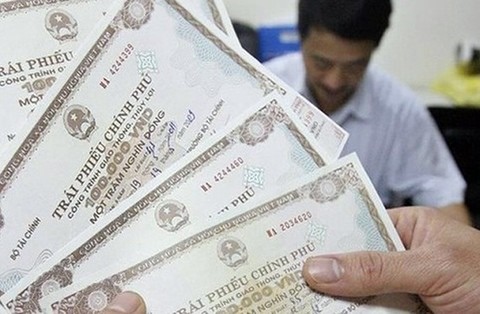
Government bond yields in Việt Nam declined for most tenors between 1 December 2023 and 29 February 2024. — Photo doanhnhansaigon.vn |
A total of VNĐ360.3 trillion (US$14.8 billion) of central bank securities matured in the last quarter of 2023, while the State Bank of Việt Nam ceased issuing securities in November. Outstanding government bonds only grew 2.0 per cent quarter-on-quarter due to reduced issuance, while corporate bond stock increased 6.8 per cent following a decline in the previous quarter.
Government bond yields in Việt Nam declined for most tenors between December 1, 2023 and February 29, 2024. In 2023, the central bank reduced its refinancing rate by a cumulative total of 150 basis points from April to June 2023, and subsequently held rates steady since July 2023 to support economic growth.
The report also showed that the sustainable bond market of member economies of the Association of Southeast Asian Nations (ASEAN), the People’s Republic of China (PRC), Japan, and the Republic of Korea expanded 29.3 per cent last year, outpacing the 21 per cent growth of the global and euro-area sustainable bond markets,
Outstanding sustainable bonds in these economies, known collectively as ASEAN+3, reached $798.7 billion by the end of 2023 and accounted for around 20 per cent of global sustainable bonds, according to the latest edition of Asia Bond Monitor, released on Thursday.
The global and euro-area sustainable bond markets reached $4.0 trillion and $1.5 trillion, respectively, by the end of 2023. Sustainable bonds are bond instruments that are used to finance projects and programs with environmental and social benefits.
“ASEAN sustainable bond issuance made up a higher share of local currency financing and long-term financing in 2023, driven by public sector participation,” said ADB Chief Economist Albert Park.
“The public sector’s participation not only adds to the supply of sustainable bonds, but also serves as a model case for the private sector and helps set a long-term pricing benchmark for these bonds in domestic markets.”
ASEAN markets recorded $19.1 billion of sustainable bond issuance last year, accounting for 7.9 per cent of aggregated issuance in ASEAN+3 sustainable bond markets. This compares with ASEAN’s 2.5 per cent share of ASEAN+3’s general bond issuance.
ASEAN recorded a higher share of local currency financing and long-term financing in sustainable bond issuance, with 80.6 per cent of sustainable bond issuance denominated in local currency and a size-weighted average tenor of 14.7 years. This outperformed the corresponding numbers of 74.3 per cent and 6.2 years in ASEAN+3, and compares with 88.9 per cent and 8.8 years in the euro area.
Financial conditions in emerging East Asia improved marginally between 1 December and 29 February, as the US Federal Reserve was expected to ease its monetary stance, while inflation continued to moderate and most economies posted sound economic growth in the region. Equity markets gained in six of nine regional economies, and a total of $17.4 billion in net foreign equity inflows was recorded. Emerging East Asia includes the member economies of ASEAN; the PRC; Hong Kong, China; and the Republic of Korea.
Emerging East Asia’s local currency bond market grew 2.5 per cent in the final quarter of last year to $25.2 trillion. Overall bond issuance contracted 4.8 per cent from the previous quarter, as most governments had fulfilled their funding requirements in prior quarters, while the PRC led a contraction in corporate borrowing amid a weak economic outlook.
The latest issue of Asia Bond Monitor features the first bond market summary for the Lao People’s Democratic Republic. It also presents the results of the Asian Bonds Online 2023 Bond Market Liquidity Survey. The survey notes improved liquidity conditions last year, narrowed bid–ask spreads, and an increase in transaction sizes in both government and corporate bonds.
ADB is committed to achieving a prosperous, inclusive, resilient, and sustainable Asia and the Pacific, while sustaining its efforts to eradicate extreme poverty. Established in 1966, it is owned by 68 members - 49 from the region.





